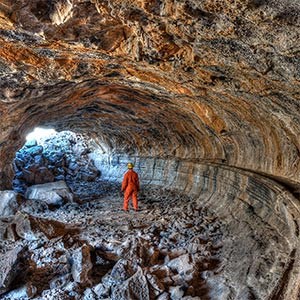
NPS Photo by Dale Pate Storehouses of knowledge, the study of caves and karst areas encompass an array of scientific disciplines ranging from archeology, biology, paleontology, meteorology, hydrology, geology, and to almost any other field imaginable. Less we forget, caves and karst areas also provide great recreational activities and a plethora of educational and outreach opportunities. And last, but not least, cave and karst areas contain vast amounts of fresh groundwater that helps supply an increasingly thirsty population.
The discoveries, scientific studies, recreational values, educational opportunities, and fresh water supplies don't come cheap though. Cave and karst areas are fragile and easy to impact and contaminate. With knowledge comes the responsibility to take care of these areas, to manage wisely using science to provide guidance, and to make decisions that give the resources the upper-hand. Without this management perspective, these resources will suffer and the places visitors see today will not be the same places we leave for our children's, children's, children. The future of these amazing places depends on decisions we make today.
|
Last updated: March 1, 2016
